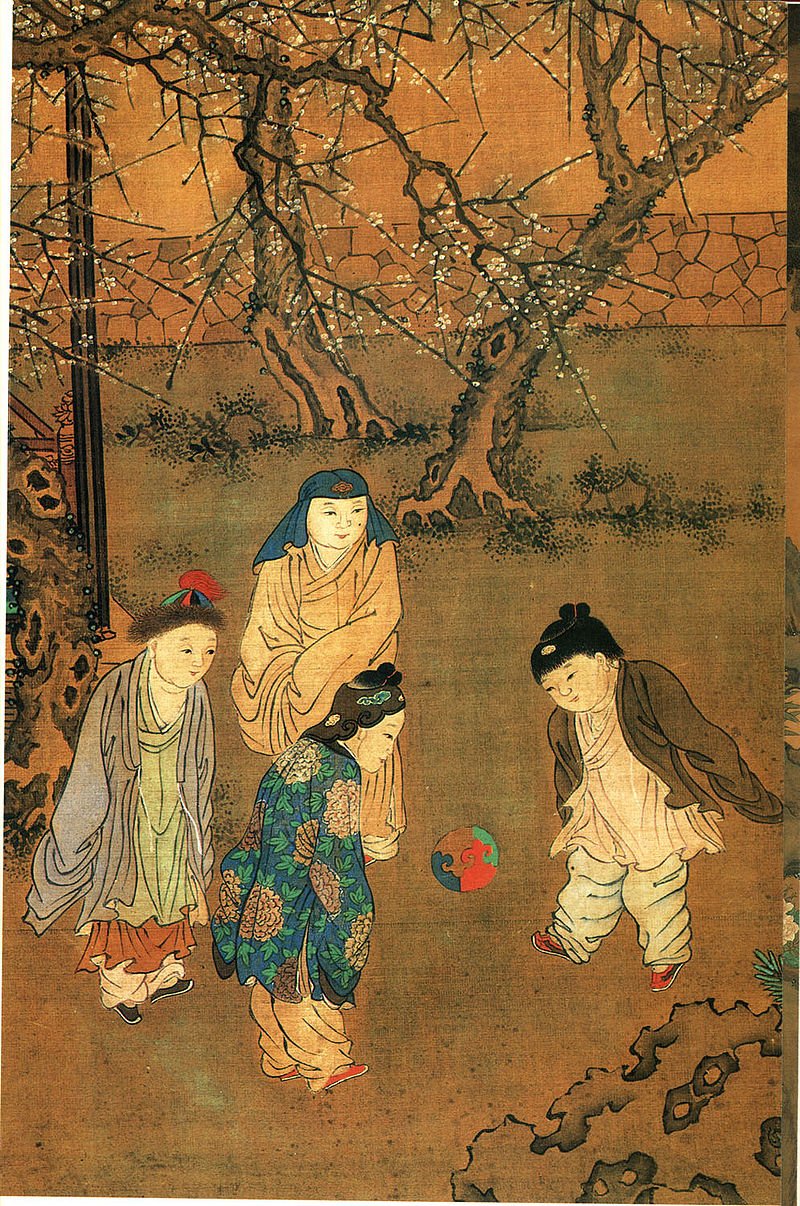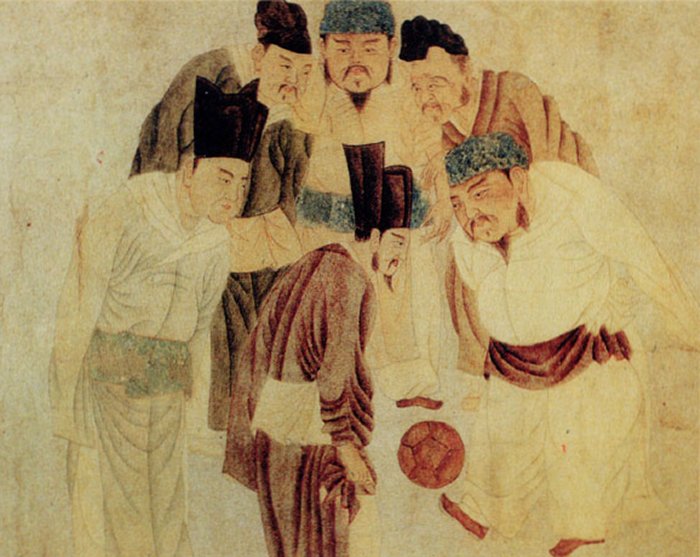Ancient Chinese Ball Game Cuju Is Earliest Form Of Football
Conny Waters - AncientPages.com - An interesting question is when and where we started playing football.
There are several references to traditional, ancient, or prehistoric ball games played by indigenous peoples in many parts of the world. The history of football stretches far back in time. According to FIFA, the competitive game cuju is the earliest form of football for which there is scientific evidence.
One Hundred Children in the Long Spring, a painting by Chinese artist Su Hanchen, active AD 1130–the 1160s), Song Dynasty. Image credit: Su Hanchen - source - Public Domain
Cuju is an ancient Chinese ball game, Cantonese "chuk-ko". It is a competitive game that involves kicking a ball through an opening into a net. The first mention of cuju in a historical text is in the Warring States era Zhan Guo Ce, in the section describing the state of Qi.
It is also described in Sima Qian's Records of the Grand Historian (under Su Qin's biography), written during the Han Dynasty. A competitive form of cuju was used as fitness training for military cavaliers, while other forms were played for entertainment in wealthy cities like Linzi.
During the Han Dynasty (206 BC-AD 220), the popularity of cuju spread from the army to the royal courts and upper classes. It is said that the Han emperor Wu Di enjoyed the sport. At the same time, cuju games were standardized, and rules were established. Cuju matches were often held inside the imperial palace.
Emperor Taizu of Song playing cuju with Prime Minister Zhao Pu, by the Yuan-era painter Qian Xuan (1235–1305). Image credit: Qian Xuan - source - Public Domain
Later, the sport was improved during the Tang Dynasty (618-907). First of all, the feather-stuffed ball was replaced by an air-filled ball with a two-layered hull. The capital of Chang'an during this dynasty was filled with several cuju football fields, which were even established on the grounds of the palaces.
Soldiers in the imperial army and Gold Bird Guard often formed cuju football teams to delight the emperor and his court.
Also, two types of goalposts emerged: One was made by setting up posts with a net between them, and the other consisted of just one goalpost in the middle of the field. The level of female cuju teams also improved. Records indicate that once, a 17-year-old girl beat a group of army soldiers. Cuju football even became popular amongst scholars and intellectuals, and if a courtier lacked skill in the game, he could pardon himself by acting as a scorekeeper.
During the Song Dynasty (960-1279), Cuju flourished thanks to social and economic development, and its popularity reached every class. Cuju organizations were set up in large cities called Qi Yun She or Yuan She - now known as the earliest professional cuju club - whose members were either cuju lovers or professional performers. There was only one goalpost set up in the center of the field.
Non-professional players had to formally appoint a professional teacher and pay a fee before becoming a member.
Cuju began its decline during the Ming Dynasty (1368-1644) due to neglect, and the 2,000-year-old sport slowly faded away. Now it is coming back again, gaining more and more popularity.
Modern football has its origin in the streets of medieval England. Neighboring towns would play each other in games where a heaving mass of players would struggle to drag a pig's bladder by any means possible to markers at either end of town. Football became so violent in England that the king banned it for over 300 years.
Updated on March 3, 2023
Written by Conny Waters – AncientPages.com Staff Writer
Copyright © AncientPages.com All rights reserved. This material may not be published, broadcast, rewritten or redistributed in whole or part without the express written permission of AncientPages.com
Expand for referencesReferences:
Image: A Song Dynasty painting by Su Hanchen, depicting Chinese children playing cuju - Credit: Su Hanchen
More From Ancient Pages
-
 On This Day In History: Battle Of Cowpens Took Place – On Jan 17, 1781
News | Jan 17, 2017
On This Day In History: Battle Of Cowpens Took Place – On Jan 17, 1781
News | Jan 17, 2017 -
 Eye Of Horus – Powerful, Ancient Egyptian Symbol With Deep Meaning
Ancient Symbols | Jan 21, 2019
Eye Of Horus – Powerful, Ancient Egyptian Symbol With Deep Meaning
Ancient Symbols | Jan 21, 2019 -
 Torquetum: Sophisticated Medieval Astronomical Instrument
Ancient History Facts | Jul 12, 2018
Torquetum: Sophisticated Medieval Astronomical Instrument
Ancient History Facts | Jul 12, 2018 -
 Paleolithic Inhabitants Of Cyprus Established Settlements Much Earlier Than Previously Estimated
Archaeology | May 17, 2024
Paleolithic Inhabitants Of Cyprus Established Settlements Much Earlier Than Previously Estimated
Archaeology | May 17, 2024 -
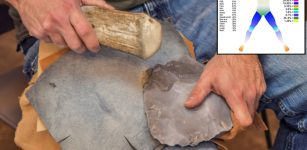 Early Humans Risked Life -Threatening Flintknapping Injuries – Long-Lasting Tradition
Archaeology | May 26, 2023
Early Humans Risked Life -Threatening Flintknapping Injuries – Long-Lasting Tradition
Archaeology | May 26, 2023 -
 Late Roman-Era Rooms, Offering Vessels Unearthed At Ancient City Of Antiocheia, Southern Türkiye
Archaeology | Oct 31, 2022
Late Roman-Era Rooms, Offering Vessels Unearthed At Ancient City Of Antiocheia, Southern Türkiye
Archaeology | Oct 31, 2022 -
 Ancus Marcius: Semi-Legendary Fourth King Of Rome Obliged To Make War To Defend And Expend Territories
Featured Stories | Jul 12, 2019
Ancus Marcius: Semi-Legendary Fourth King Of Rome Obliged To Make War To Defend And Expend Territories
Featured Stories | Jul 12, 2019 -
 2,550 Submerged Wooden Objects Recovered From The Templo Mayor Of Tenochtitlan
Archaeology | Jun 25, 2022
2,550 Submerged Wooden Objects Recovered From The Templo Mayor Of Tenochtitlan
Archaeology | Jun 25, 2022 -
 Ruins Of Sodom, Lost Ancient Biblical City Destroyed By God – Uncovered
Archaeology | May 5, 2015
Ruins Of Sodom, Lost Ancient Biblical City Destroyed By God – Uncovered
Archaeology | May 5, 2015 -
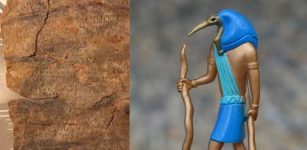 Curse Of The Dancer – Mysterious 1,500-Year-Old Tablet Finally Deciphered
Archaeology | Oct 14, 2019
Curse Of The Dancer – Mysterious 1,500-Year-Old Tablet Finally Deciphered
Archaeology | Oct 14, 2019 -
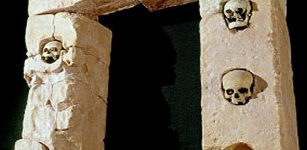 Ancient Cult Of Human Skulls And Communication With The Other World
Ancient Traditions And Customs | Mar 21, 2019
Ancient Cult Of Human Skulls And Communication With The Other World
Ancient Traditions And Customs | Mar 21, 2019 -
 Remarkably Well-Preserved 1,900-Year-Old Chinese Bronze Mirror Unearthed In Japan
Archaeology | Dec 29, 2017
Remarkably Well-Preserved 1,900-Year-Old Chinese Bronze Mirror Unearthed In Japan
Archaeology | Dec 29, 2017 -
 On This Day In History: ‘Bloody Sunday’ In Northern Ireland – On Jan 30, 1972
News | Jan 30, 2017
On This Day In History: ‘Bloody Sunday’ In Northern Ireland – On Jan 30, 1972
News | Jan 30, 2017 -
 Deception And Hidden Truth – Ancient Struggle Of The Eagle And Serpent – Part 2
Ancient Mysteries | Sep 6, 2019
Deception And Hidden Truth – Ancient Struggle Of The Eagle And Serpent – Part 2
Ancient Mysteries | Sep 6, 2019 -
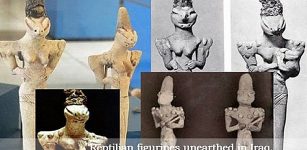 The Mystery Of The Serpent Seed
Biblical Mysteries | Jul 19, 2019
The Mystery Of The Serpent Seed
Biblical Mysteries | Jul 19, 2019 -
 Kiln Was Invented In Mesopotamia Around 6,000 B.C.
Ancient History Facts | Mar 7, 2018
Kiln Was Invented In Mesopotamia Around 6,000 B.C.
Ancient History Facts | Mar 7, 2018 -
 Pre-Columbian Pachacamac Site Dedicated To God Of Creation, Fire And Earthquakes In Inca Religion
Featured Stories | May 31, 2018
Pre-Columbian Pachacamac Site Dedicated To God Of Creation, Fire And Earthquakes In Inca Religion
Featured Stories | May 31, 2018 -
 Nammu: Sumerian Goddess Who Got The Idea To Create Mankind In The Image Of Gods
Featured Stories | Apr 1, 2019
Nammu: Sumerian Goddess Who Got The Idea To Create Mankind In The Image Of Gods
Featured Stories | Apr 1, 2019 -
 Warming Of North Pacific Helped First Human Migration From Asia To North America
Archaeology | Dec 15, 2020
Warming Of North Pacific Helped First Human Migration From Asia To North America
Archaeology | Dec 15, 2020 -
 Submerged Wreck Of Mayan Slave Ship Identified By INAH Researchers
Archaeology | Sep 23, 2020
Submerged Wreck Of Mayan Slave Ship Identified By INAH Researchers
Archaeology | Sep 23, 2020

